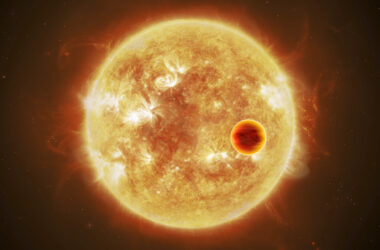You might think litter is bad here on Earth but humanity junk extends well into space. It is estimated we have collectively produced 8,262 tons of space junk!
A team of Engineers from Japan’s Tohoku University want to tackle the problem of discarded satellites, pieces of spacecraft and tools in Earths orbit by zapping them with a plasma beam.

The idea is simple. A satellite would be fitted with a type of engine called a helicon plasma thruster. The satellite would then ‘shoot’ space junk with the beam it produces.
If aimed carefully they believe it could be used to knock pieces of space junk out of orbit and into our planet’s atmosphere to burn up.
Problems with the Law
The biggest problem facing the plan is the law. Specifically Newton’s third law of motion; ‘For every action, there is an equal and opposite reaction’.

A concept sketch for how the space debris craft would work by using bi-directional momentum ejection from a satellite.
Simply blasting space junk would propel the satellite away from it making it difficult to effectively push it. Their solution is to add an additional engine to the other side of the craft which would push it back into position with each blast.
The team has now tested a prototype device in a laboratory space simulation chamber (which mimics the conditions of space) and found that they could control the craft and it worked as intended.

Large photo of the crafts magnetic nozzle rf plasma thruster (helicon plasma thruster) with two open source exits; small photographs of the three operation modes in the laboratory test.
As space junk is a problem that is only going to get worse in future this could be the first step to a long-term solution.
Published as “Demonstrating a new technology for space debris removal using a bi-directional plasma thruster” in Scientific Reports, 8, 14417 (2018).
DOI: 10.1038/s41598-018-32697-4







